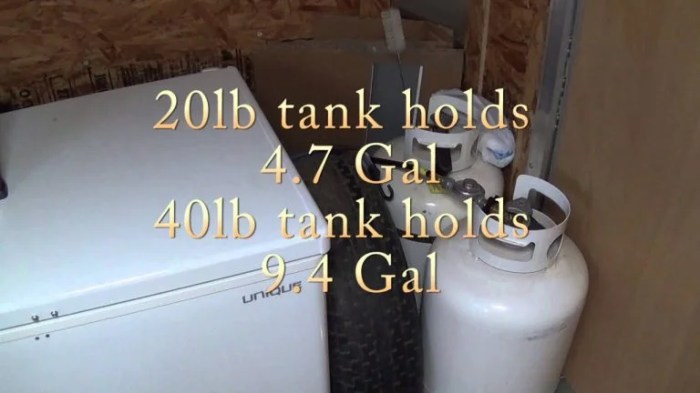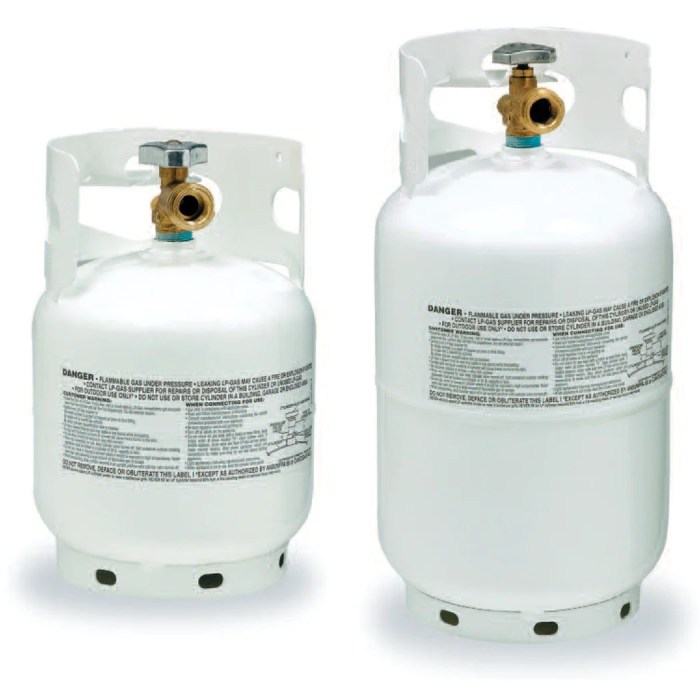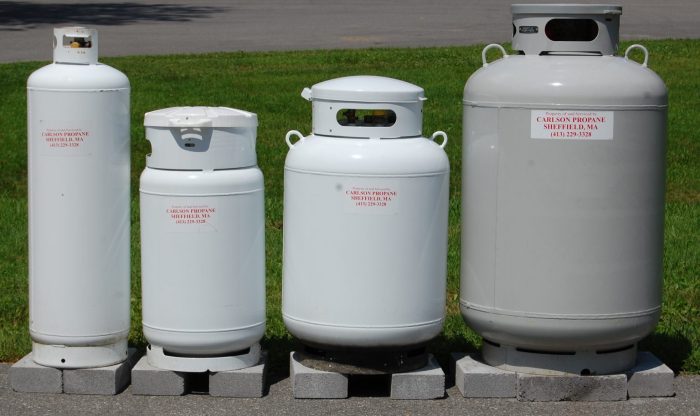How many cubic feet in a propane tank? This comprehensive guide delves into the intricacies of propane tank dimensions, cubic feet calculations, factors affecting volume, and practical applications. With meticulous precision and an authoritative tone, we unravel the complexities surrounding propane tank capacities, empowering you with the knowledge to make informed decisions.
Understanding the cubic feet in a propane tank is crucial for safe and efficient usage. This guide provides a thorough examination of propane tank sizes, conversion charts, and calculation formulas. We explore the impact of temperature and pressure on propane volume, ensuring a comprehensive understanding of these critical factors.
Propane Tank Dimensions: How Many Cubic Feet In A Propane Tank
Propane tanks come in a variety of sizes, with the most common being 20-pound, 30-pound, and 40-pound tanks. These tanks are typically used for grilling, camping, and other outdoor activities. Larger propane tanks, such as 100-pound and 500-gallon tanks, are used for commercial and industrial applications.
Conversion Chart
The following table provides a conversion chart for gallons to cubic feet:
| Gallons | Cubic Feet |
|---|---|
| 20 | 5.66 |
| 30 | 8.50 |
| 40 | 11.33 |
| 100 | 28.33 |
| 500 | 141.67 |
Calculating Cubic Feet

Determining the cubic feet of a propane tank is crucial for estimating the volume of propane it can hold and calculating its weight. The formula for calculating cubic feet is as follows:
Cubic Feet = (Diameter in inches)2x (Length in inches) x 0.7854
The constant 0.7854 represents the mathematical conversion factor for converting cubic inches to cubic feet.
Example Calculations
- For a tank with a diameter of 12 inches and a length of 24 inches:
- For a tank with a diameter of 18 inches and a length of 36 inches:
Cubic Feet = (12) 2x 24 x 0.7854 = 226.19 cubic feet
Cubic Feet = (18) 2x 36 x 0.7854 = 636.17 cubic feet
Factors Affecting Volume

The volume of propane in a tank is not constant and can be affected by several factors, primarily temperature and pressure.
As temperature increases, the pressure inside the tank increases, causing the propane to expand and occupy more volume. Conversely, when the temperature decreases, the pressure inside the tank decreases, and the propane contracts, occupying less volume.
Vapor Space
Vapor space is the empty space above the liquid propane in a tank. It is essential to maintain adequate vapor space to allow for the expansion of propane as temperature increases. Insufficient vapor space can lead to over pressurization of the tank, potentially causing safety hazards.
Applications and Considerations
Propane tanks find applications in various domains, ranging from residential to commercial and industrial settings.
In residential areas, propane tanks are commonly used for grilling, heating, and powering appliances such as water heaters, stoves, and clothes dryers. Commercial establishments also utilize propane for cooking, heating, and water heating purposes. In industrial settings, propane is employed as a fuel for forklifts, generators, and other equipment.
Safety Considerations, How many cubic feet in a propane tank
Handling and storing propane tanks require utmost care to ensure safety. Always adhere to the following guidelines:
- Always keep propane tanks upright to prevent leakage.
- Store tanks in well-ventilated areas away from heat sources and direct sunlight.
- Never smoke or use open flames near propane tanks.
- Inspect tanks regularly for leaks or damage. If a leak is detected, close the tank valve immediately and contact a qualified technician.
- Transport propane tanks securely in a well-ventilated vehicle.
- Follow the manufacturer’s instructions for proper installation and maintenance of propane appliances.
Table of Tank Sizes and Cubic Feet

This table provides the dimensions and cubic feet of various propane tank sizes, helping you determine the appropriate tank for your specific needs.
The cubic feet of a propane tank is a crucial factor in determining its capacity and the amount of propane it can hold. Understanding the relationship between tank size and cubic feet is essential for safe and efficient propane usage.
Tank Sizes and Dimensions
| Tank Size (Gallons/Pounds) | Dimensions (Height x Diameter) | Cubic Feet |
|---|---|---|
| 20/40 | 24″ x 12″ | 3.3 |
| 30/60 | 29″ x 12″ | 5 |
| 40/80 | 35″ x 12″ | 6.6 |
| 100/200 | 48″ x 24″ | 20 |
| 120/240 | 48″ x 30″ | 24 |
| 250/500 | 72″ x 30″ | 50 |
| 500/1000 | 96″ x 30″ | 100 |
Essential Questionnaire
What is the standard size of a propane tank?
Standard propane tanks range from 20 to 100 pounds, with corresponding gallon capacities. The most common sizes are 20, 30, 40, and 100 pounds.
How do I convert gallons to cubic feet for a propane tank?
To convert gallons to cubic feet, multiply the gallon value by 7.48. For example, a 20-gallon propane tank has a volume of 20 x 7.48 = 149.6 cubic feet.
What factors can affect the volume of propane in a tank?
Temperature and pressure significantly impact propane volume. Higher temperatures cause propane to expand, increasing its volume, while higher pressures compress propane, reducing its volume.
What is vapor space in a propane tank?
Vapor space is the empty space above the liquid propane in a tank. It is essential for allowing propane to expand and contract with temperature changes, preventing over-pressurization.